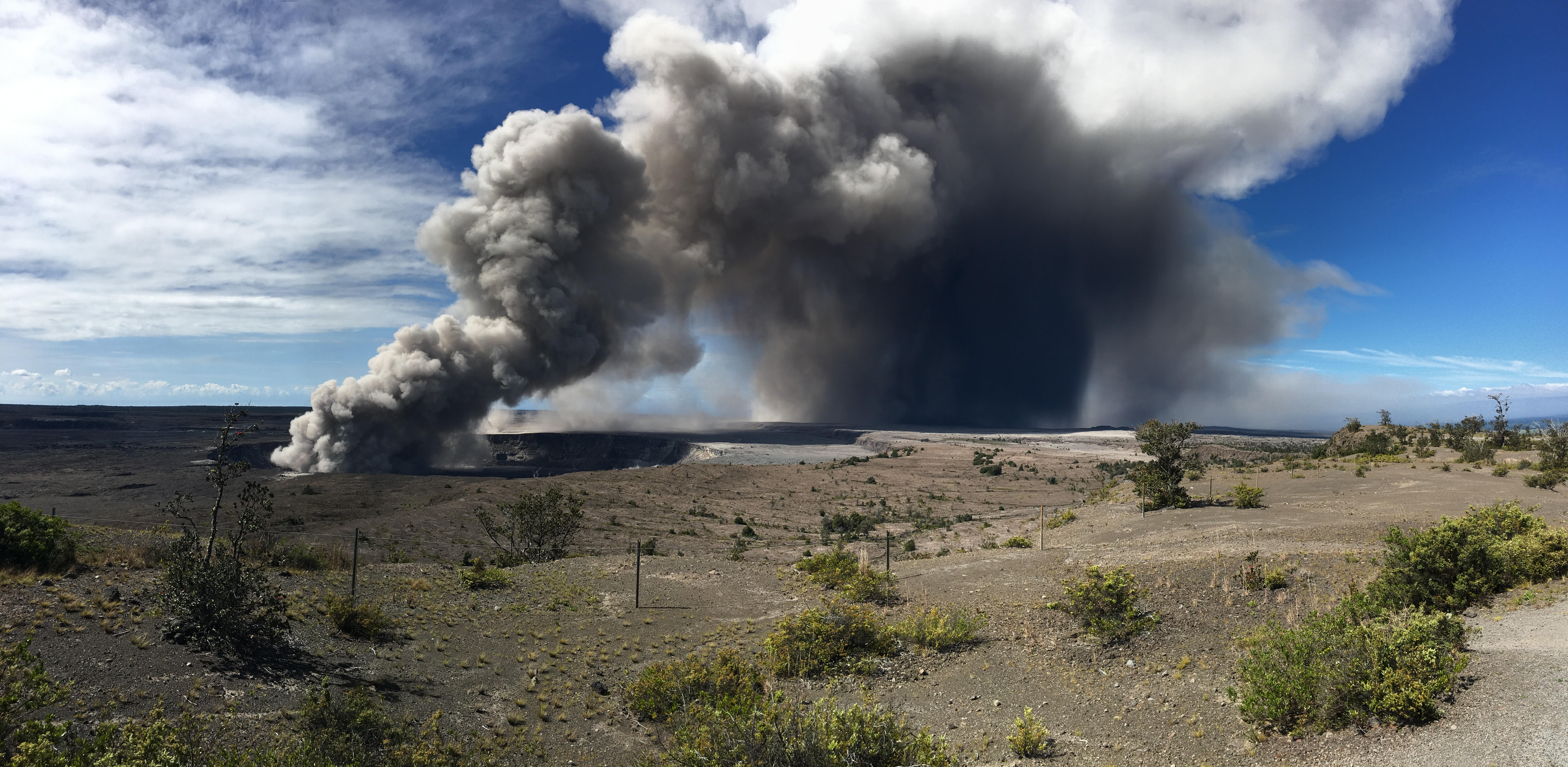Updated: May 17, 2018
Kilauea volcano erupts sending ash cloud 30,000 feet
USGS and NOAA offer tools to keep the public informed about hazardous conditions
 |
| NWS issues first-ever ashfall advisory for Hawaii after ash plumes rise from the Kilauea volcano. Hawaii, May 15, 2018. Credit: U.S. Geological Survey |
Emissions from the crater continue following a violent explosion at the Kilauea summit on May 17. USGS and NOAA’s National Weather Service are working together to observe, model and warn the public of hazardous conditions. Here is where you can find the information you need to stay safe.
Ashfall Advisories, Warnings and Current Weather Forecast from Honolulu
Forecasters will issue ashfall advisories and warnings when ashfall is a hazard. NOAA predicts where an ash plume will go and how much ash will accumulate using USGS’s Ash3d Volcanic Ash Dispersion Model.
Volcanic Ash Advisories and Aviation Warnings
Volcanic ash clouds can threaten air traffic by sandblasting windscreens, clogging pitot tubes, and in severe cases, causing jet engines to shut down. NOAA issues volcanic ash warnings to alert pilots to potential ash in the atmosphere and will include volcanic ash in forecasts for airports.
Observations and Status of Kilauea
While the USGS Hawaii Volcanoes Observatory is positioning staff to observe the volcano and best communicate its status and evolution, they rely heavily on the weather forecasts from NOAA. Wind forecasts, along with dispersion models such as HYSPLIT, are critical in understanding where sulphur dioxide (SO2) and particulate matter (PM2.5) will disperse from fissures and vents to ensure safety of emergency managers and the public.
Tips to Stay Safe
During explosive eruptions, volcanic ash can disrupt downwind populations by causing breathing problems, impacting water quality, clogging air filters, shorting outpower systems and making transportation difficult. If your community is threatened by ash, you are advised to do the following:
 |
|
| Lava spattering at Kilauea volcano, Hawaii,May 16, 2018. Credit: U.S. Geological Survey |
Kilauea volcano erupting, Hawaii, May 15, 2018. Credit: U.S. Geological Survey |
Contacts:
John Bravender, NOAA/NWSFO Honolulu, John.Bravender@noaa.gov
Donyelle Davis, USGS Public Affairs, volcanomedia@usgs.gov